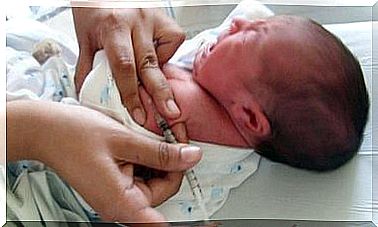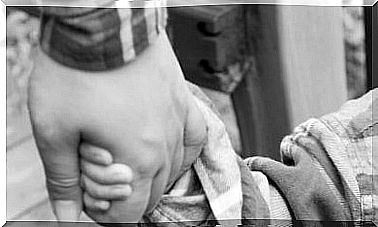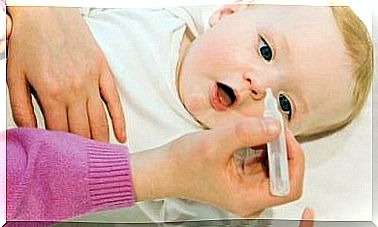Intestinal Prolapse In Children: Symptoms, Causes And Treatment

Intussusception, also known as intussusception or intussusception, is a condition that occurs in children between the ages of 3 months and 3 years old. It is a medical emergency caused by an intestinal blockage. This blockage occurs because part of the intestine slides in on itself.
Another term for referring to this condition is the telescope effect, due to the way the tissue folds in on itself. In general, it occurs in the large intestine, the small intestine, or in the area between these two organs.
Early treatment is essential to avoid complications. Therefore, knowledge about this problem can make a big difference.
The symptoms of intestinal instability in children
The first symptoms of intussusception in children is sudden and loud crying. At first, the pain may appear in the form of irregular abdominal cramps. The cramp then becomes more painful with each occurrence and each occurrence gets longer and longer.
While the symptoms may vary from case to case, the common symptoms of this condition include the following:
- Pulling up the knees : The knees pull towards the chest as the child squirms and cries.
- Bloody stools with a mucous consistency, similar to jam or gelatin.
- Fever, lethargy, pallor, vomiting bile, dehydration, sweating, etc.
- In some cases, you may notice a lump or bloating in the abdominal area.
As soon as you notice any of these symptoms, take your child to the doctor or pediatrician for a thorough examination. This will likely include an X-ray, an air enema, or an ultrasound with contrast dye. Treatment within 24 hours generally results in positive results.

Different ways to treat intestinal insufficiency in children
Once a medical expert has made a diagnosis, he or she decides on a treatment. The first step is usually to give an IV to prevent dehydration. Then the treatment may consist of the following:
Applying an enema
Many doctors choose to start treatments with a barium enema. This involves placing a tube in the child’s rectum to introduce air. The aim is therefore for the air to return the intestines to their original state. However, in case of infection, this method may not be effective.
Surgery
If the child’s health is too sensitive to other procedures, the doctor may decide that surgery is necessary. The procedure involves an incision in the abdomen. The surgeon places air in the affected area to move the tissue back into place. In cases of dead tissue, the surgeon will remove it and stitch the surrounding tissue together.
It is important to point out that intussusception in children is a condition that can endanger the life of the child. That is why it is important that you seek medical attention as soon as the first symptoms appear. This increases the chances of effective treatment and rapid recovery.
What are the causes of intestinal instability in children?
Intestinal prolapse in children can be the result of unknown causes. However, viral diseases, polyps and inflamed lymph nodes in the abdominal cavity can be risk factors.
Intestinal obstruction is a condition that can occur at any age. However, the majority of cases occur in small children. In addition, the problem is slightly more common in boys.

What are the consequences of intestinal instability in children?
Intussusception in children occurs because the bowel slides in on itself. This condition can have the following consequences:
- Irritation and inflammation.
- Decreased blood flow, leading to tissue death.
- Food cannot pass.
- Huge bleeding.
- Perforation that can lead to infection, dehydration and even sudden shock.
If this condition is not treated in time, the results can be fatal. Another important factor to keep in mind is that intestinal instability tends to be recurrent. That is why it is important to keep the problem under control on a regular basis.
In summary, intestinal engorgement – or intussusception – in children occurs when the part of the bowel slides into the adjacent part. This results in symptoms that require immediate attention. The risks of suffering from this increase with the existence of previous events or a family history.









